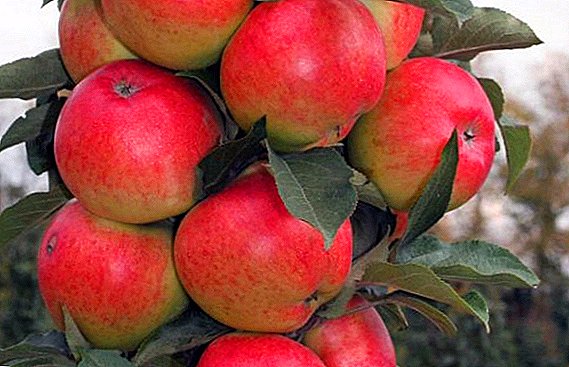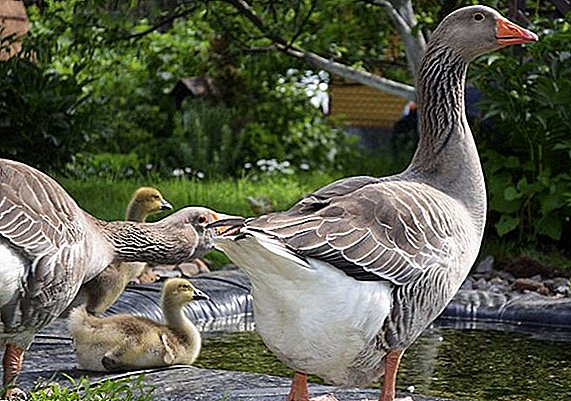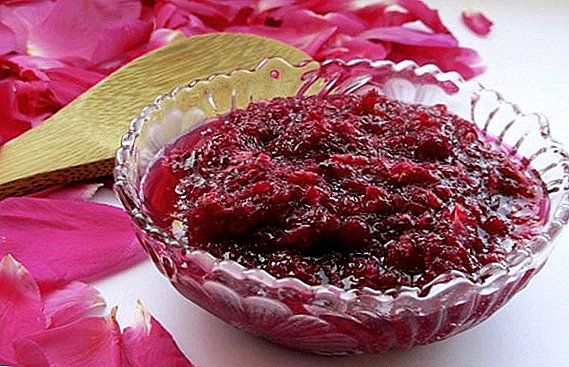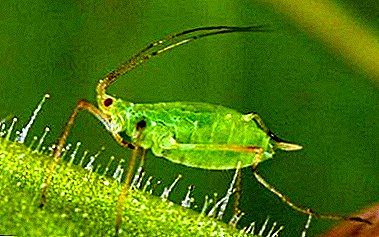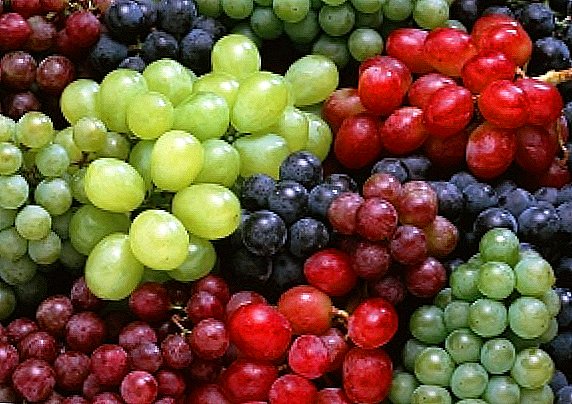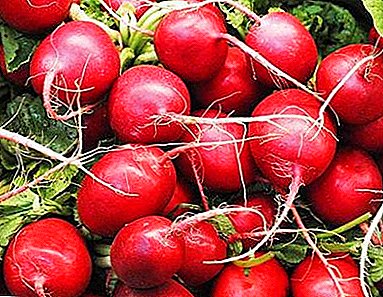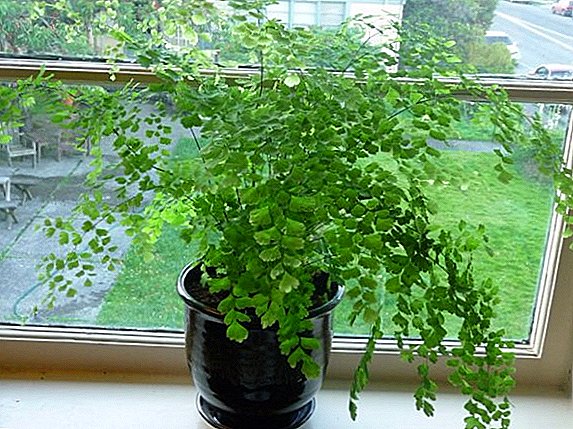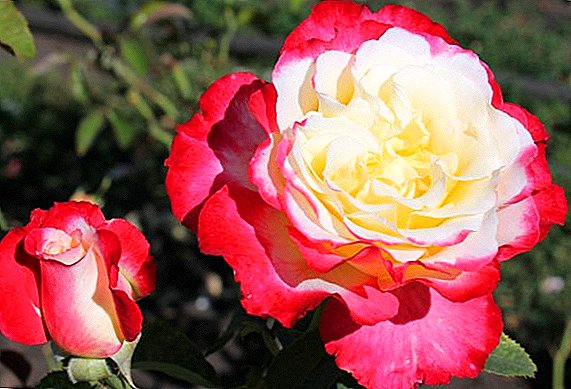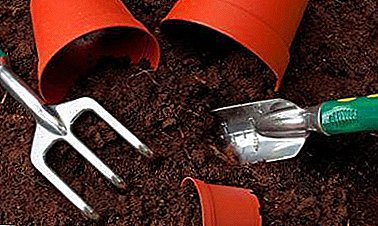
Gloxinia is a low-growing herb, native to which is Brazil. This flower is popular among modern flower growers with its variety of shades.
Some species of this plant delight their bloom all year round. Bright flowers, bells will be a wonderful interior decoration.
Growing gloxinia at home requires proper care and certain knowledge. One of the first points is the choice of soil for the flower.
What land is needed for indoor flower?
The plant is very demanding on the soil. Special ready-made soil mixtures, such as "Violet", "Begonia" or "Saintpaulia", the main component of which is peat, are perfect for gloxinia. Flower seed can be grown in special peat tablets.
Important! Land for transplant must be sterilized. Due to this, the destruction of harmful microorganisms and pests, due to which the flower can get sick.
About diseases and pests of gloxinia, as well as methods of dealing with them can be found in this article.
Methods of soil disinfection:
- Frost. This must be done twice.
- Cultivation of the land with potassium permanganate. The soil is watered with a hot solution (1 tsp. Of manganese per liter of water) potassium permanganate and allowed to dry. This option can be called the cheapest and most effective.
- With the help of fungicidal agents.
 Calcination. The soil is kept in the oven for 15-20 minutes at a temperature of 90-100 degrees. If the temperature is higher, the earth will deteriorate.
Calcination. The soil is kept in the oven for 15-20 minutes at a temperature of 90-100 degrees. If the temperature is higher, the earth will deteriorate.- Steaming in a water bath. Do this procedure for two hours.
Properties that the ground should have:
- nutrition;
- ease;
- ability to retain moisture and breathability.
Independent preparation of the soil, its composition
If there is no ready ground, you can prepare it yourself:
- leaf humus-2 parts;
- meadow chernozem-2 parts;
- peat-1 part;
- gray river sand is 1 part.
About why gloxinia does not bloom and how to make it release the buds, read our material.
The soil can be mixed with hydrogel, which works on the sponge principle. During watering, moisture absorption and swelling occur. And then, as the surrounding soil dries, it gradually gives up the absorbed. It is a fine granule and is sold as a dry concentrate. To use, you need to pour water or complex fertilizers and wait a few hours. Jelly-like pieces, which turned out, mixed with the earth at the rate of 1 to 2.
In the mixture, you can add humus or rotted manure - 50 g per liter of finished soil.
Correct pot
When choosing a pot should be repelled by the size of the tubers. If they are small, then you can use plastic cups. For medium sized dishes with a diameter of 7-1 cm, for adults 10-15 cm. The pots should be wide and deep. Suitable as earthenware and plastic utensils.
How to transplant?
 In late February and early March, the rest state of gloxinia ends (you can find out about the peculiarities of gloxinia wintering here). In the spring the most suitable time for plant transplantation. Small sprouts begin to appear on tubers. They are taken out of the ground, washed with clean water and inspected. If there is rot on the tubers, it is cut with a knife, and cuts sprinkled with crushed coal.
In late February and early March, the rest state of gloxinia ends (you can find out about the peculiarities of gloxinia wintering here). In the spring the most suitable time for plant transplantation. Small sprouts begin to appear on tubers. They are taken out of the ground, washed with clean water and inspected. If there is rot on the tubers, it is cut with a knife, and cuts sprinkled with crushed coal.
To prevent rotting, the tubers are soaked in a solution of foundationzol, phytosporin, or another fungicidal agent. A dark pink solution of potassium permanganate is also suitable. Then the tubers are dried during the day.
In the ground make a deepening of two thirds of the height of the tuber. The earth is slightly moistened and covered with a film. The pot is placed in a warm and bright place. Tubers air for half an hour in the morning and in the evening. When the first pair of leaves appears, the film is removed, the ground is filled, covering the tuber.
Important! With each transplant gloxinia change the soil.
How to fill the pot with the substrate before planting gloxinia:
- The first and lower layer is drainage, the thickness of which should be at least 1-2 cm.
- Next is a mixture of soil. Its amount depends on the size of the tuber. From above he must remain open.
We offer to watch a video on the topic: "How to plant gloxinia"
Watering
Watering the plant is necessary as the land dries, pouring water into the pan or along the edge of the pot. This is done by settled water, the temperature of which is two degrees above room temperature. This is necessary to quickly absorb moisture from the roots and reduce the risk of rotting of the root system. In the room where there is a flower should not be drafts.
Important! Excessive moisture can damage the flower. Watering is reduced in rainy, overcast and cold weather. At this time, the soil dries out badly.
When flowering gloxinia requires special attention. During this period, the flower needs increased humidity, the air is moistened by spraying around the plant.
How to properly water and feed gloxinia, so that it blooms for a long time, read here.
Top dressing
Gloxinia is fed once every ten days. Top dressing begins when the plant leaves the state of dormancy and a shoot develops from the tuber. Stop in mid-August. Fertilizers are applied an hour after the main irrigation at the edges of the pot, avoiding contact with the leaves and the growing point.
 Plant food can be prepared by yourself. To do this, take 10 liters of water:
Plant food can be prepared by yourself. To do this, take 10 liters of water:
- 10g. simple superphosphate;
- 0.1 g ferric chloride;
- 0,004g. copper sulfate;
- 0.07g. boric acid;
- 10g. potassium chloride;
- 4g. ammonium nitrate;
- 5g. magnesium sulfate;
- 0.05g. manganese sulphate;
- 0,008g. zinc sulfate.
Conclusion
Growing gloxinia can not be called simple. However, with due diligence and compliance with all rules, beauties will delight just a magical flowering. And most importantly do not forget about feeding plants.


 Calcination. The soil is kept in the oven for 15-20 minutes at a temperature of 90-100 degrees. If the temperature is higher, the earth will deteriorate.
Calcination. The soil is kept in the oven for 15-20 minutes at a temperature of 90-100 degrees. If the temperature is higher, the earth will deteriorate.